A forest-based economy
October 29, 2019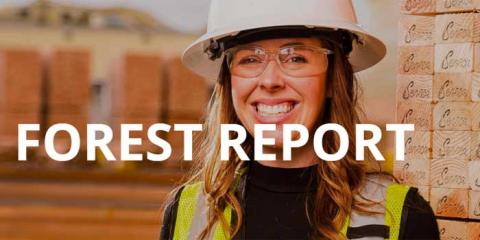
The Oregon Forest Resources Institute (OFRI) recently published a new report and a website that quantify how significant forests are to Oregon’s economy. A full report and a summary report can be downloaded here. The 2019 Forest Report underscores how timber harvest and wood products manufacturing are tied to a thriving forest sector – the part of the state economy derived from forests. Here are some highlights of the information included in the report.
Oregon’s forest economy is really driven by the wood products industry. Wood products manufacturing begins with the harvest of timber as logs on forestland in Oregon. But not all forests are the same when we talk about how much timber is harvested from them. That’s often dependent on who owns the forest.
Ownership vs. harvest
While the federal government manages about 60% of the forestland in Oregon, only about 13% of Oregon’s timber harvest happens on federal land. About 78% of the total state harvest comes from private timberlands, which account for 34% of Oregon’s forestland.
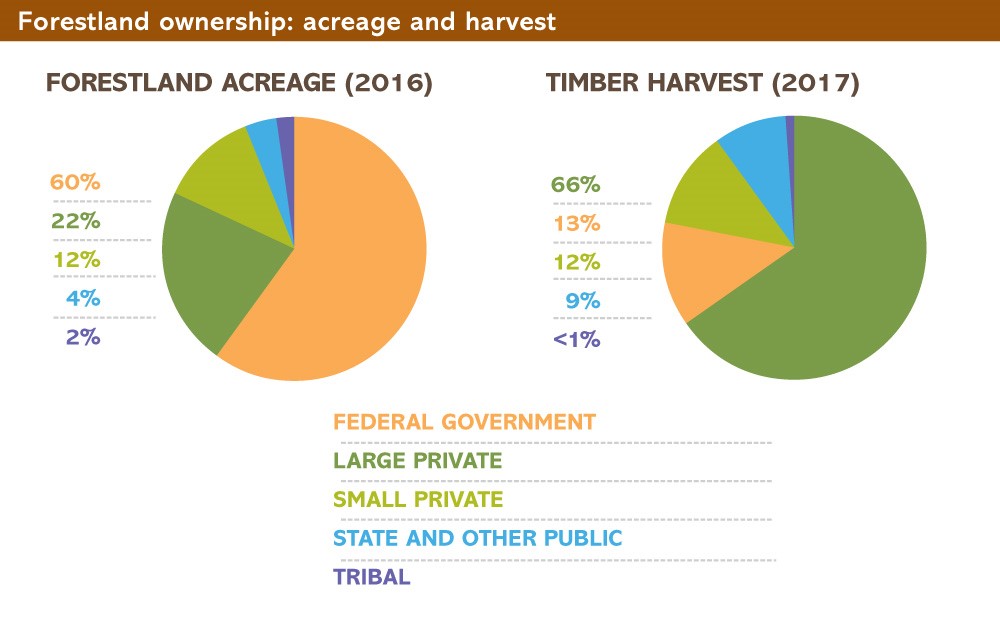
This relationship of timber harvest to ownership has not been constant over time. The graphic below, from the OFRI publication Oregon Forest Facts 2019-20, shows how timber harvest has changed over the past 37 years.
Overall, Oregon timber harvest has declined from about 8 billion board feet in 1985 to about 3.8 billion board feet in 2017. The big driver in this decline has been reduction in federal timber harvest since the adoption of the Northwest Forest Plan in 1994. Federal timber harvest has declined from over 4 billion board feet in 1985 to about 500 million board feet in 2017.

Wood products manufacturing
Timber harvested from Oregon forests is used to make a wide range of products, generating income and employment for many rural communities. Some examples include:
*Softwood and hardwood lumber and plywood
*Engineered wood products
*Composite wood products
*Posts, poles and timber
*Millwork
*Biomass energy
*Heating
Most of the facilities that make these products are located in western Oregon, close to the state’s main timber stocks. In 2013, Oregon wood processing facilities received more than 3.7 billion board feet of timber, 94.5% of which was harvested in Oregon.
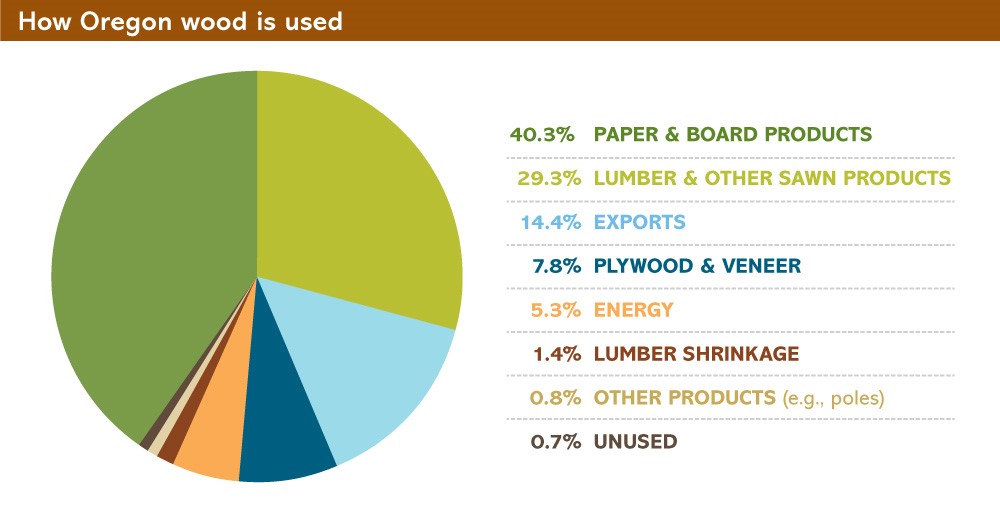
The number of sawmills in Oregon decreased 53% from 1988 to 2017, and by 38% from 2003 to 2017. While the number of sawmills has declined, it may not necessarily be because of declining industry. The decrease can also be partly explained by changes in mill efficiency, timber supply and industry consolidation.
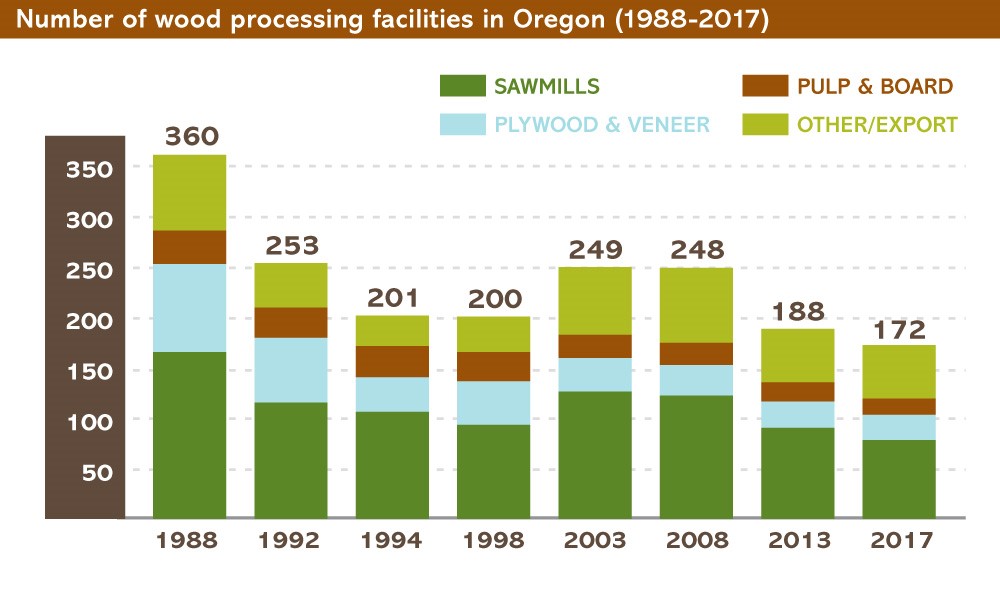
No. 1 in the nation
In 2017, Oregon sawmills produced more than 5.4 billion board feet of lumber, continuing the state’s longtime status as the nation’s top softwood lumber producer. Annual lumber production in Oregon has increased by 33.7% from 2010 to 2017. This shows excellent and sustained recovery since the Great Recession.
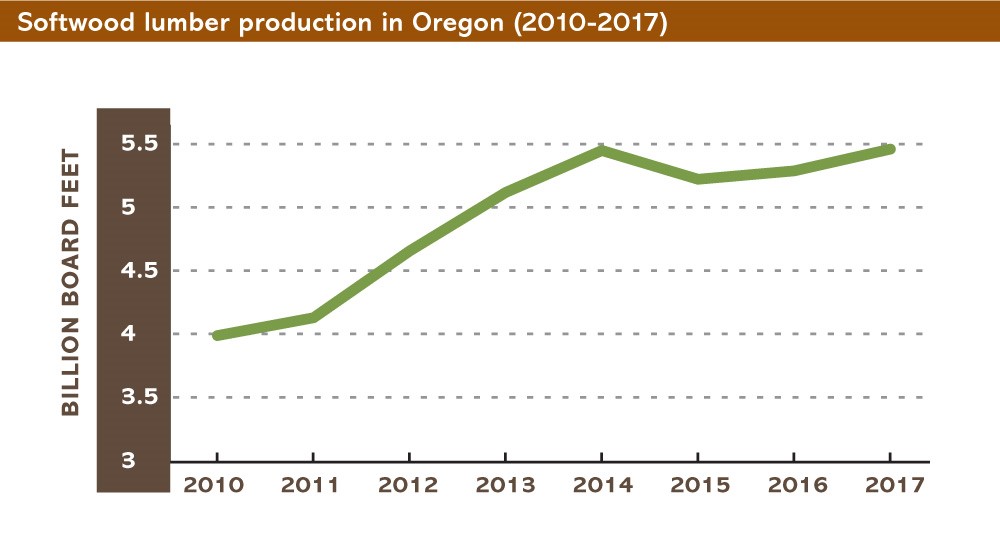
The following table from Oregon Forest Facts 2019-20 shows how Oregon softwood lumber production compares with the other top lumber-producing states for the past six years:
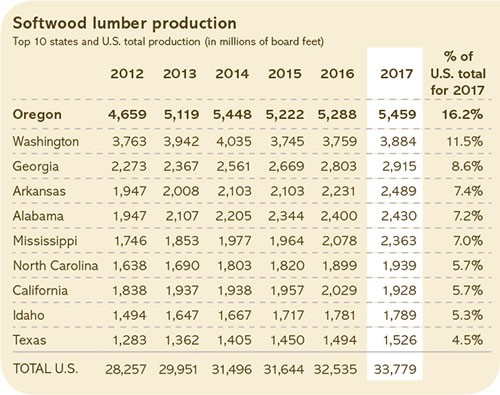
The full Forest Report and summary contain a lot more information about Oregon’s forest economy. To find out more, visit TheForestReport.org.
For the forest,
Mike Cloughesy
Director of Forestry
